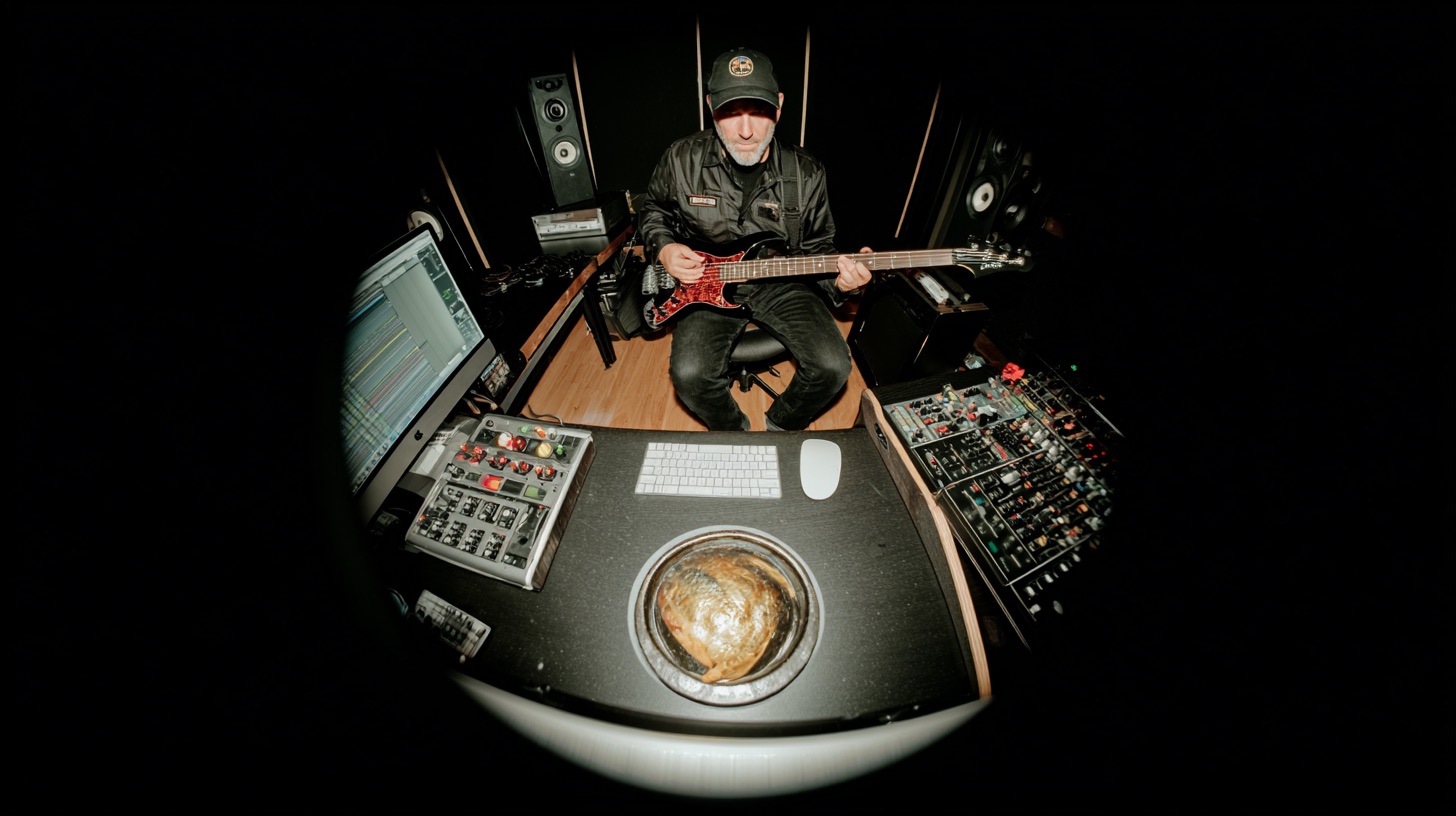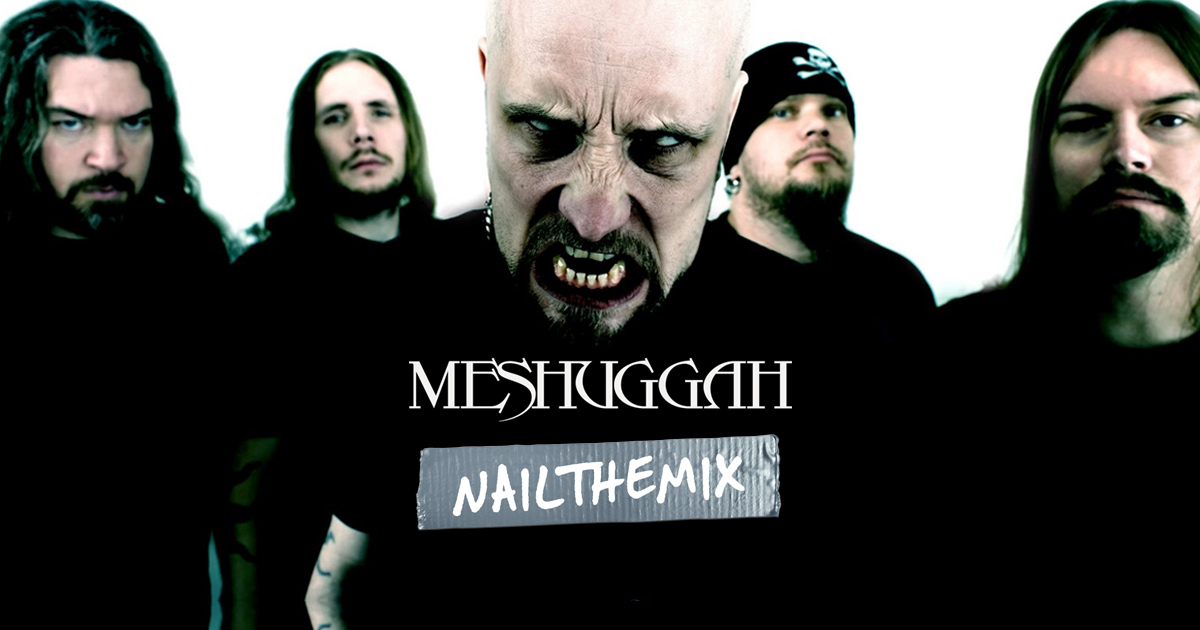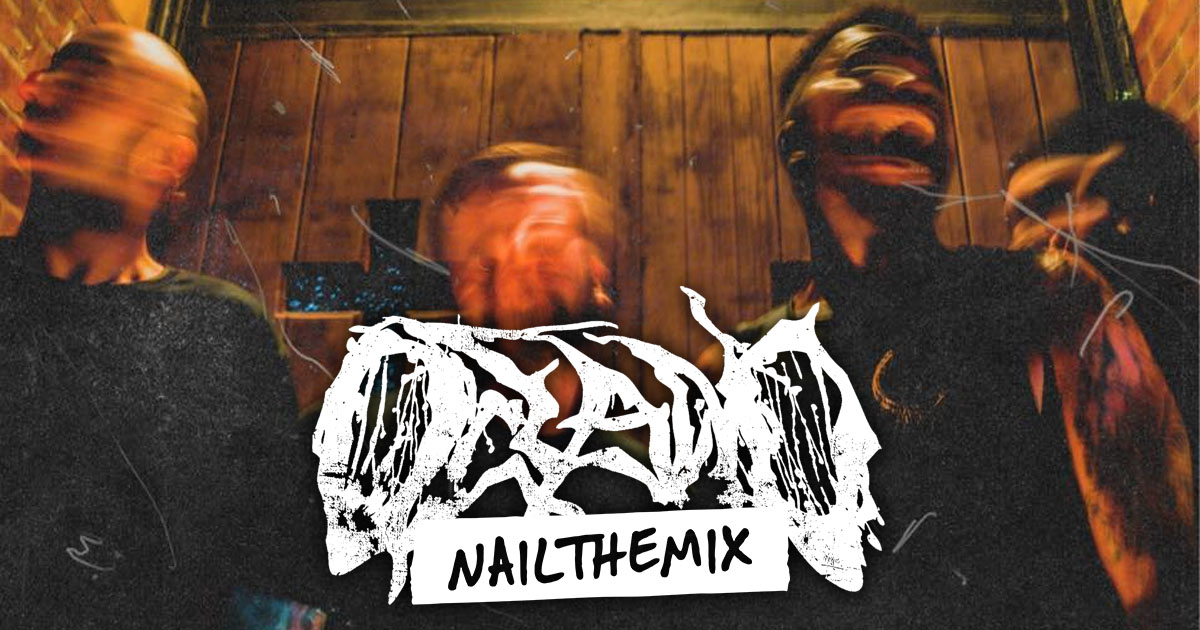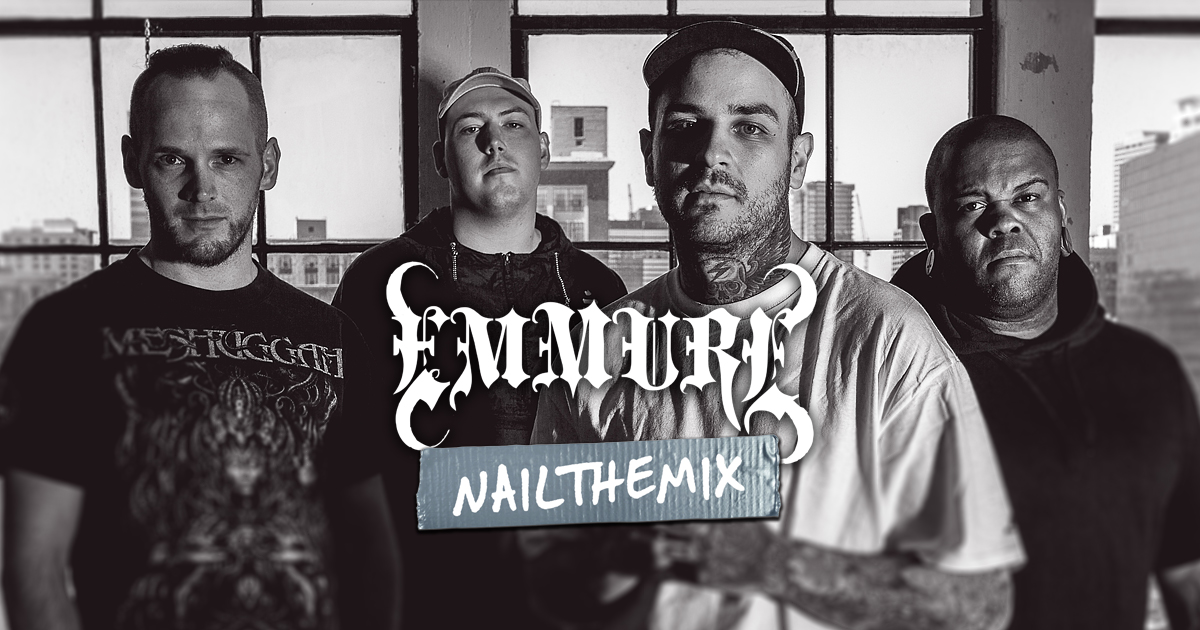
Neural DSP Quad Cortex: Why It’s a Metal Production Game-Changer
Nail The Mix Staff
The Neural DSP Quad Cortex. You’ve seen it on pedalboards, in studios, and all over your social feeds. This sleek little box has seriously shaken up the guitar and bass world, especially in modern metal. But is it just hype, or is the Quad Cortex genuinely one of the most powerful tools a metal producer can have in their arsenal today? Let's dive in.
The game has changed. Modern metal isn't just about loud guitars anymore; it demands incredibly polished production, even from unsigned bands. The bar is higher than ever, but thankfully, so is the accessibility of killer gear. The Quad Cortex sits right at the sweet spot of pro-level sound and bedroom producer-friendly workflow.
Why the Quad Cortex is a Beast for Modern Metal Production
If you're aiming for that super-polished, mix-ready sound that defines current metal, the Quad Cortex delivers in spades. It’s not just about emulating classic amps; it’s about providing the building blocks for tones that can compete with major label releases.
Nail Ultra-Polished Tones Straight Out of the Box (Almost)
Remember when getting a truly convincing amp tone without a real amp and a mic'd cab felt like a pipe dream? Those days are long gone. The Quad Cortex is packed with an insane amount of processing power, bringing Neural DSP’s acclaimed amp modeling and effects to a floor unit.
- Stellar Amp Models: Whether you’re after the tight, aggressive chug of a Peavey 5150/6505 block letter (often labeled something like "PVH 6160" or similar in modelers), the saturated roar of a Mesa Boogie Dual Rectifier ("US Cali Recto"), or the articulate clarity of a Fortin Cali Suite or Nameless Suite, the QC has you covered. Neural DSP’s own Archetype plugin tones, like those from Archetype: Gojira or Archetype: Nolly, also find their DNA within the QC's capabilities, offering signature sounds that are instantly recognizable in modern metal.
- Neural Capture: Your Amps, Your Pedals, Your Sound: This is a massive one. Got a favorite modded amp or a unique overdrive pedal? Neural Capture lets you create a digital snapshot of its sonic character. Imagine capturing that one-of-a-kind Maxon OD808 boosted Marshall JCM800 tone from your buddy's rig, or even a rare fuzz pedal. You can then use these Captures within the QC or share them on the Cortex Cloud. This means you’re not just limited to stock models; the tonal palette is virtually infinite.
- Achieving Pro-Level Consistency: The QC helps bridge that gap between a local band's demo and a national act's production. You can dial in a tone, save it, and recall it perfectly every single time, whether you're tracking demos, re-amping, or even taking it on the road.
Versatility for the Genre-Bending Metal Landscape
Modern metal isn't confined to one subgenre. Bands like Spiritbox blend ethereal cleans with bone-crushing heaviness, Polyphia infuses hip-hop and pop sensibilities, and Falling In Reverse throws multiple genres into a single song. The Quad Cortex is built for this kind of sonic exploration.
- Beyond High-Gain: Sure, it does brutal high-gain like nobody’s business, but the QC also excels at pristine cleans (think Fender Twin Reverb or Roland JC-120 style models), crunchy rock tones, and even exceptional bass amp simulations. Models inspired by Darkglass Microtubes B7K or Ampeg SVT ("SV-Bass Beast") can give your bass that modern metal clank and grind.
- Creative Effects Chains: Want to craft an ambient intro with shimmering reverbs (like Eventide Blackhole style algorithms) and tape-like delays before slamming into a syncopated breakdown? The QC’s extensive effects library lets you build complex signal chains. You can route things in series, parallel, split signals – it’s like having a giant, reconfigurable pedalboard inside. Try routing a pitch shifter like a DigiTech Whammy (often modeled as "Pitch Wham") before a high-gain amp for those ultra-low, dive-bombing riffs, or use stereo delays and modulated reverbs for expansive lead tones.
Tackling Modern Metal's Unique Sonic Challenges with the QC
Conquering the Low-End: QC and Extended Range Guitars
Drop D is practically vintage these days. With 7, 8, and even 9-string guitars becoming commonplace, managing that extended low-frequency information is critical. Bands like Humanity's Last Breath are pushing tunings to extremes, making low-end clarity paramount.
- Amp Voicings for Clarity: Many of the QC’s amp models, especially those based on modern high-gain designs like the Fortin series or even some Mesa-inspired models, are voiced to retain articulation even with extreme down-tuning.
- Surgical EQ Onboard: The Quad Cortex boasts powerful onboard EQs (Parametric and Graphic). This is where you tame the mud. For an 8-string tuned to F#, you'll likely need to make some precise cuts. A common starting point is a high-pass filter (HPF) on your guitar tracks around 80-100Hz (or even higher depending on the mix and bass guitar). Then, use a parametric EQ block to carefully notch out problematic low-mid frequencies, often somewhere between 200Hz and 400Hz, to prevent clashing with the bass guitar and kick drum. You can place an EQ before the amp block to tighten the input signal and another after the cab sim for final shaping.
- Bass Integration: When your guitars are already in bass territory, what does the bass guitar do? The QC can help here too. Using distinct amp models and EQ settings for bass (e.g., a cleaner, sub-focused Darkglass tone) versus the guitars (a more mid-focused, aggressive tone) helps them occupy their own space.
Getting this low-end balance right is crucial. If you’re looking to really master how to carve out space and ensure every instrument hits hard without turning your mix into a swamp, diving deep into how to EQ metal guitar is essential.
Sculpting with Precision: Onboard EQ and Cab Sims
A great amp tone is only half the battle; the cabinet and microphone (or impulse response in the digital world) are just as important. The QC’s cab simulation and IR loading capabilities are top-notch.
- Impulse Responses (IRs): The QC comes with a solid selection of factory cab sims, but the real power comes from loading your own third-party IRs. Companies like OwnHammer, York Audio, or GetGoodDrums (like their Zilla Cabs IR pack) offer incredibly detailed captures of various cabinets and microphones. A popular combination for metal is often a Mesa Boogie 4×12 cab with Celestion Vintage 30 speakers, miked with a Shure SM57 and maybe a Royer R-121 blended in. With the QC, you can load two different IRs and blend them, or even pan them slightly, to emulate a dual-mic setup similar to the Fredman technique.
- Taming "Fizz": Just like Fredrik Nordström talked about cutting guitar fizz for Bring Me The Horizon, you can use the QC’s parametric EQs with a narrow Q to surgically remove those harsh, unpleasant high frequencies (often between 5kHz-10kHz, sometimes even higher) that can make distorted guitars sound cheap. This cleans up the tone without sacrificing aggression.
The Quad Cortex in a Modern Producer's Workflow
More Than Just a Live Rig: A Studio Powerhouse
- USB Audio Interface: The Quad Cortex functions as a high-quality USB audio interface. This means you can record your guitar or bass directly into your DAW, monitor through the QC, and even re-amp signals with ease. Send a dry DI track from your DAW back through the QC, tweak amp settings to perfection, and record the processed tone.
- Outboard Effects Processor: Got a synth line or vocal that could use some unique distortion or a wild delay? Route audio from your DAW through the QC and use its effects blocks as outboard gear.
- This accessibility ties into the robust ecosystem of modern metal producers. You don’t need a million-dollar studio anymore to create pro-sounding tracks.
Integrating with Your DAW and Plugins
While the QC can get you 90% of the way there, it plays nicely with your existing DAW workflow and plugin collection.
- Core Tone from QC, Fine-tuning in the DAW: You might get your main distorted rhythm tone entirely from the Quad Cortex, but then use a specific plugin EQ like a FabFilter Pro-Q 3 for final transparent tweaks in the mix, or your favorite bus compressor on your guitar group.
- Compression Considerations: The QC has some great built-in compressor models, perfect for shaping dynamics at the source. However, you might still want to apply further compression during the mixing stage for cohesion and punch. For a deeper understanding, exploring the ins and outs of an audio compressor can really elevate your mixes.
Presets and Captures: Community and Efficiency
The Cortex Cloud is a fantastic resource. You can upload your own presets and Neural Captures, and download those shared by other users. This is an incredible way to quickly try out different amp/effect combinations, find starting points for your own tones, or discover how other producers are using the unit. It fosters a sense of community and accelerates the learning curve.
Getting That "Nail The Mix" Polish with the Quad Cortex
The Neural DSP Quad Cortex provides an arsenal of world-class tones at your fingertips. It helps you meet the incredibly high sonic expectations of modern metal, allowing you to craft everything from crystal-clear cleans to earth-shattering distortion with unparalleled detail.
But here’s the thing: having amazing tools like the Quad Cortex, killer drum libraries like GetGoodDrums or Superior Drummer 3, and powerful DAWs is one thing. Knowing how to make all those elements work together in a dense, aggressive, yet clear metal mix? That’s where the real art and science come in.
The Quad Cortex gives you incredible raw ingredients, but knowing how to blend them into a finished mix – that’s where the magic truly happens. Think about it: the difference between a good tone and a great mix often lies in those crucial decisions: how the guitars sit with expertly programmed or recorded drums, how the bass glues to the low-tuned riffs without turning into mud, and how everything punches through without becoming a painful wall of noise. It’s about understanding how to EQ those QC tones in the context of a full band, how to use compression to make them sit right, and how to use automation to bring a mix to life.
At Nail The Mix, we show you exactly how pros take killer tones from units like the Quad Cortex and sculpt them into release-ready tracks. You get to watch world-class producers mix real songs from bands like Periphery, Gojira, Meshuggah, and Lamb of God, often using similar tools and facing the same challenges you do. They explain their thought processes, every plugin choice, every EQ move, every compression setting.
Ready to stop guessing and start mixing modern metal with confidence, moving beyond just tweaking presets on your Quad Cortex? It's time to learn how to make all the pieces fit together. Unlock Your Sound: Mixing Modern Metal Beyond Presets and see exactly how the pros get those polished, powerful, and impactful metal mixes.
The Neural DSP Quad Cortex is undeniably a revolutionary piece of gear for any modern metal musician or producer. It empowers you to create sounds that were previously out of reach for many. Combine that power with the knowledge of how to make it shine in a full mix, and there’s nothing holding you back from producing truly world-class metal.
Get a new set of multi-tracks every month from a world-class artist, a livestream with the producer who mixed it, 100+ tutorials, our exclusive plugins and more
Get Started for $1






